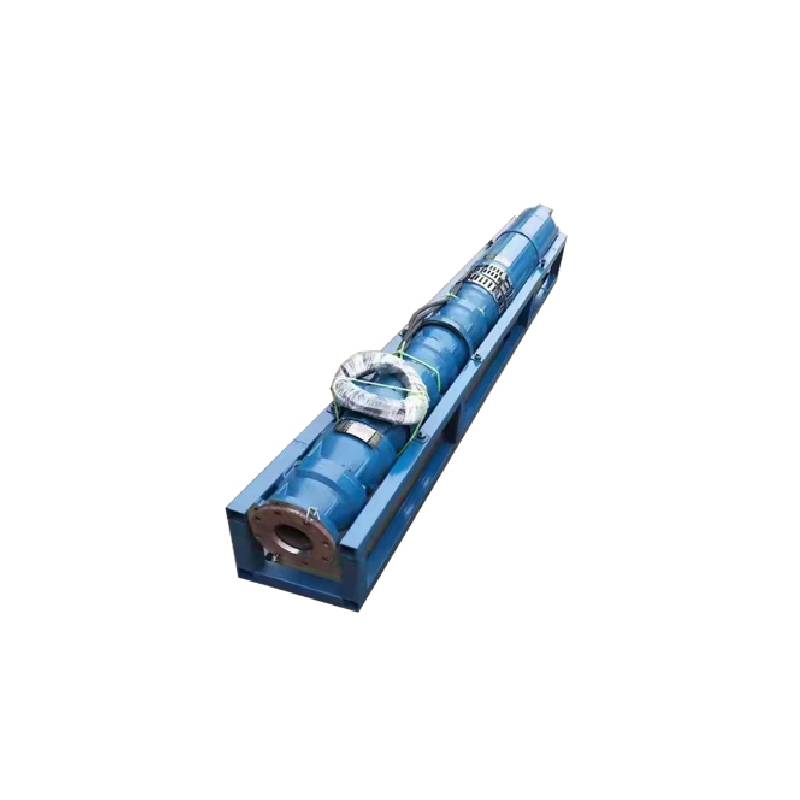Nov . 12, 2024 10:23 Back to list
submersible drainage pump
Understanding Submersible Drainage Pumps A Comprehensive Overview
Submersible drainage pumps play a critical role in various industrial, agricultural, and residential applications, ensuring efficient water removal and effective management of excess water. As their name suggests, these pumps are designed to operate while submerged in water, making them ideal for draining basements, dewatering construction sites, or managing floodwaters. In this article, we’ll delve into the specifics of submersible drainage pumps, their working mechanisms, applications, and important considerations for selecting the right pump.
Working Mechanism
At the heart of every submersible drainage pump is its motor, which is sealed and submerged within the fluid being pumped. This design makes it uniquely efficient compared to its counterparts, such as centrifugal pumps, which require a suction lift to operate. The motor drives an impeller that creates pressure, pushing the water up through the discharge pipe. The design minimizes the risk of cavitation, enabling the pump to work more effectively in deep water scenarios.
Submersible drainage pumps come in various sizes and capacities, ranging from small units designed for residential use to large, robust pumps used in industrial applications. The materials used in their construction are typically corrosion-resistant to handle the various contaminants found in water, including dirt, chemicals, and debris.
Applications
The versatility of submersible drainage pumps allows them to be utilized in numerous contexts
1. Residential Uses Homeowners often turn to submersible pumps for basement flooding or excessive water accumulation in yards. They are effective in removing water from sump pits, protecting homes from potential water damage.
2. Construction Sites During the construction of buildings and other infrastructures, excess water can hinder progress. Submersible pumps are crucial in dewatering excavations, trenches, and foundations, enabling construction work to continue smoothly.
3. Agriculture Farmers utilize these pumps for irrigation and drainage purposes. They ensure that fields are adequately drained during heavy rains, preventing crop damage, while also supplying necessary irrigation.
4. Wastewater Management Submersible pumps are commonly used in municipal settings to move sewage and waste. They help transport wastewater to treatment facilities efficiently, ensuring proper sanitation and public health.
submersible drainage pump

5. Flood Management In areas prone to flooding, these pumps are vital for quick water removal, helping to mitigate the impact of natural disasters. Their ability to operate continuously and efficiently can make a significant difference in emergency situations.
Selecting the Right Submersible Drainage Pump
Choosing the right submersible drainage pump requires careful consideration of several factors
- Capacity and Flow Rate Assess the volume of water that needs to be managed and select a pump that can handle the necessary flow rate, typically measured in gallons per minute (GPM).
- Head Height This refers to the vertical distance the pump must move water. It's crucial to choose a pump that can reach the required head height for your specific application.
- Durability Consider the materials used in the pump’s construction. Pumps designed for corrosive or abrasive environments should be made of materials like stainless steel or high-quality thermoplastics to ensure longevity.
- Power Source Submersible pumps can be powered either electrically or by gasoline. Electric pumps are more common in residential applications, while gasoline pumps may be preferred in remote or industrial settings.
- Features Look for additional features such as automatic float switches, which activate the pump when water reaches a certain level, or built-in overheat protection to extend the pump’s lifespan.
Conclusion
Submersible drainage pumps are essential tools for managing water efficiently across various sectors. Understanding their mechanisms, applications, and key selection criteria can empower consumers and businesses to make informed decisions. As technology advances, these pumps are becoming more efficient, reliable, and user-friendly, offering significant solutions for water management challenges. Whether you’re dealing with a flooded basement or a construction site, investing in the right submersible drainage pump can save you time, money, and potential damage in the long run.
-
Submersible Water Pump: The Efficient 'Power Pioneer' of the Underwater World
NewsJul.01,2025
-
Submersible Pond Pump: The Hidden Guardian of Water Landscape Ecology
NewsJul.01,2025
-
Stainless Well Pump: A Reliable and Durable Pumping Main Force
NewsJul.01,2025
-
Stainless Steel Submersible Pump: An Efficient and Versatile Tool for Underwater Operations
NewsJul.01,2025
-
Deep Well Submersible Pump: An Efficient 'Sucker' of Groundwater Sources
NewsJul.01,2025
-
Deep Water Well Pump: An Efficient 'Sucker' of Groundwater Sources
NewsJul.01,2025
-
 Submersible Water Pump: The Efficient 'Power Pioneer' of the Underwater WorldIn the field of hydraulic equipment, the Submersible Water Pump has become the core equipment for underwater operations and water resource transportation due to its unique design and excellent performance.Detail
Submersible Water Pump: The Efficient 'Power Pioneer' of the Underwater WorldIn the field of hydraulic equipment, the Submersible Water Pump has become the core equipment for underwater operations and water resource transportation due to its unique design and excellent performance.Detail -
 Submersible Pond Pump: The Hidden Guardian of Water Landscape EcologyIn courtyard landscapes, ecological ponds, and even small-scale water conservancy projects, there is a silent yet indispensable equipment - the Submersible Pond Pump.Detail
Submersible Pond Pump: The Hidden Guardian of Water Landscape EcologyIn courtyard landscapes, ecological ponds, and even small-scale water conservancy projects, there is a silent yet indispensable equipment - the Submersible Pond Pump.Detail -
 Stainless Well Pump: A Reliable and Durable Pumping Main ForceIn the field of water resource transportation, Stainless Well Pump has become the core equipment for various pumping scenarios with its excellent performance and reliable quality.Detail
Stainless Well Pump: A Reliable and Durable Pumping Main ForceIn the field of water resource transportation, Stainless Well Pump has become the core equipment for various pumping scenarios with its excellent performance and reliable quality.Detail
